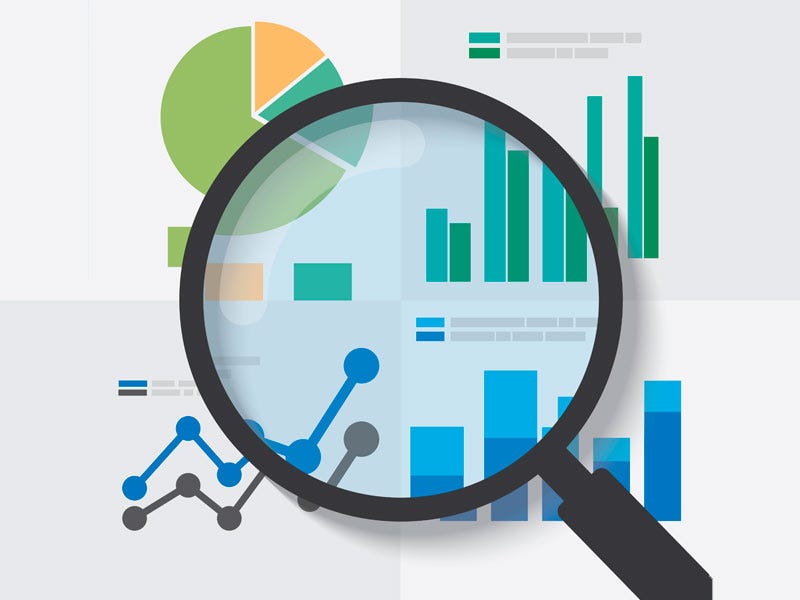Explore the landscape of quantitative research as you unravel the intricacies of data analysis. From the precision of measurable variables to the rigor of statistical tests, quantitative research unveils a world of structured methodologies and empirical evidence. As you navigate through the realm of numerical data and standardized instruments, discover how these characteristics form the backbone of impactful research across various industries. What secrets lie within the realm of statistical tools and repeatable methods? Join the discourse on the defining traits of quantitative research and unlock the power of data-driven decision-making.
Measurable Variables and Standardized Instruments
When conducting quantitative analysis, the utilization of measurable variables and standardized instruments is fundamental for ensuring the validity and reliability of collected data. Research validity hinges on the accurate measurement of variables in a consistent manner, allowing for reliable interpretations. Instrument reliability is crucial in guaranteeing that the tools used to gather data produce consistent and dependable results. Sampling techniques play a vital role in quantitative analysis by ensuring that the selected sample is representative of the population, thereby enhancing the generalizability of the findings. Statistical analysis is the cornerstone of quantitative research, enabling researchers to draw meaningful conclusions from the collected data through robust analytical methods. Data interpretation in quantitative analysis involves making sense of the statistical results obtained, providing insights into the relationships and patterns discovered within the data. By adhering to these principles, researchers can conduct rigorous quantitative analysis that yields reliable and valid findings.
Data Presentation and Repeatable Methods
To convey the results effectively and ensure replicability, quantitative analysis relies on presenting data in tables, graphs, or figures and employing repeatable methods. Data visualization plays a crucial role in aiding data interpretation for researchers and stakeholders. By presenting data visually, trends, patterns, and relationships become more apparent, facilitating a deeper understanding of the research outcomes. Moreover, utilizing repeatable methods ensures methodological consistency, enabling research replication by other scholars. This consistency in approach not only enhances the credibility of the research but also allows for validation and verification of findings. Quantitative analysis heavily relies on these principles to maintain accuracy and reliability in drawing conclusions from the data. Therefore, incorporating data presentation techniques and repeatable methods is fundamental in the process of conducting quantitative research, as it ensures clarity, consistency, and reproducibility in the research outcomes.
Focus on Numerical Data and Large Sample Size
In quantitative research, focusing on numerical data and employing a large sample size is essential for ensuring statistical significance and generalizability of results. Data analysis in quantitative research heavily relies on numerical data to draw conclusions and make informed decisions. By emphasizing numerical data, researchers can utilize statistical techniques effectively to analyze and interpret the data collected. Large sample sizes play a crucial role in research methods by providing a more accurate representation of the population under study. The significance of a large sample size lies in its ability to minimize sampling errors, enhance statistical power, and allow for better decision-making based on the findings. When conducting quantitative research, the emphasis on numerical data and large sample sizes ensures that the research outcomes are reliable, replicable, and can be generalized to broader populations, thus contributing to the credibility and validity of the research findings.
Statistical Tests and Software Usage
Statistical tests and software usage play a pivotal role in quantitative research by enabling you to analyze data effectively and draw meaningful conclusions. Utilizing statistical analysis and software tools is essential for testing hypotheses, determining significance levels, and conducting regression analysis along with correlation techniques. These methods aid in interpreting data, reducing bias, and ensuring research validity and reliability. By employing statistical tests, you can assess the significance of relationships within your data, enhancing the credibility of your findings. Software tools streamline the analysis process, allowing for more efficient and accurate results. Through these techniques, you can confidently draw inferences and make informed decisions based on quantitative data. Ensuring the validity and reliability of your research is crucial, and statistical tests, along with software applications, provide the necessary tools to achieve this goal effectively.
Objectivity, Reproducibility, and Generalization
Ensuring objectivity, reproducibility, and generalization in quantitative research is fundamental for drawing reliable conclusions and making informed decisions based on data analysis. Research validity is maintained by implementing rigorous reliability measures, employing appropriate sampling techniques, and ensuring accurate data interpretation through robust statistical analysis. Validity is crucial as it confirms that the research accurately measures what it intends to measure. Reliability measures guarantee consistency and stability in data collection and analysis processes. Sampling techniques, such as random sampling, help in generalizing findings from a sample to a larger population. Data interpretation involves making sense of the collected data through statistical analysis, ensuring that conclusions are based on evidence rather than assumptions. By upholding these principles, quantitative research can produce trustworthy results that contribute to the advancement of knowledge and informed decision-making.
Hypothesis Testing and Statistical Tools
Maintaining objectivity and reproducibility is integral when transitioning to the discussion on ‘Hypothesis Testing and Statistical Tools’ in quantitative research.
- Data analysis is crucial in hypothesis testing, where statistical tools are employed to interpret and draw conclusions from the collected data.
- Research validity is ensured through rigorous statistical analysis to support the hypotheses being tested.
- Statistical significance plays a vital role in determining the strength of relationships observed in the data.
- Reliability testing is essential to guarantee that the findings are consistent and can be replicated.
In hypothesis testing and statistical tools, various sampling techniques are utilized to ensure that the collected data is representative of the population under study. By employing these statistical methods, researchers can analyze data objectively, establish patterns, and draw meaningful conclusions that contribute to the body of knowledge in quantitative research.
Data Collection Methods in Quantitative Research
Utilize structured surveys, experiments, and observations as key data collection methods in quantitative research. Survey design involves closed-ended questions to gather specific responses efficiently. Experimental manipulation allows researchers to study cause-and-effect relationships by controlling variables. Observational data collection entails recording behaviors or events in their natural setting. These methods provide data for analysis using statistical techniques to determine patterns and relationships. Data analysis techniques like regression and correlation analysis help in interpreting the collected data. Statistical significance is crucial to validate findings and draw reliable conclusions from the data. Researchers rely on these methods to ensure the validity and reliability of their results, enabling them to test hypotheses accurately. By employing these rigorous data collection methods, researchers can draw meaningful insights and make informed decisions based on the statistical significance of their findings.
Importance for Businesses and Versatility
Quantitative research plays a pivotal role in providing businesses with objective, data-driven insights for informed decision-making. Here are four key aspects highlighting the importance and versatility of quantitative research in business:
- Decision making insights: Quantitative research offers valuable insights that aid in making well-informed decisions based on empirical data rather than assumptions.
- Data collection tools: Through standardized tools like surveys, businesses can gather precise and relevant data efficiently, enabling strategic decision-making.
- Uncertainty reduction: By relying on statistical analysis and large sample sizes, quantitative research helps reduce uncertainty by providing reliable and accurate information for businesses.
- Statistical analysis versatility: Techniques such as conjoint analysis and GAP analysis enhance the versatility of statistical analysis in addressing various business needs, from measuring consumer value to aligning with strategic objectives.







